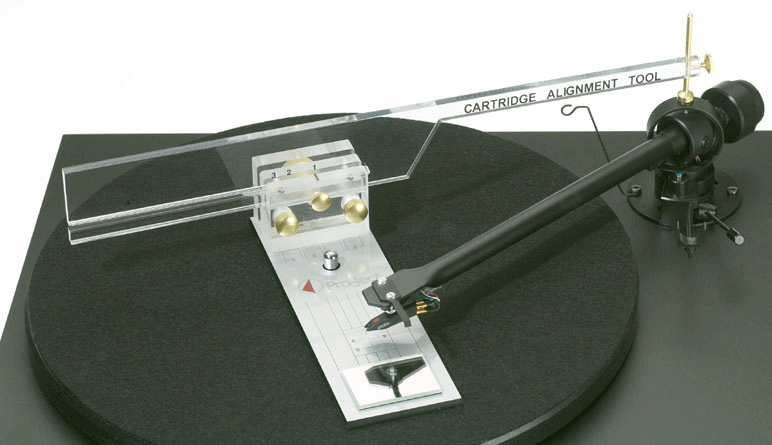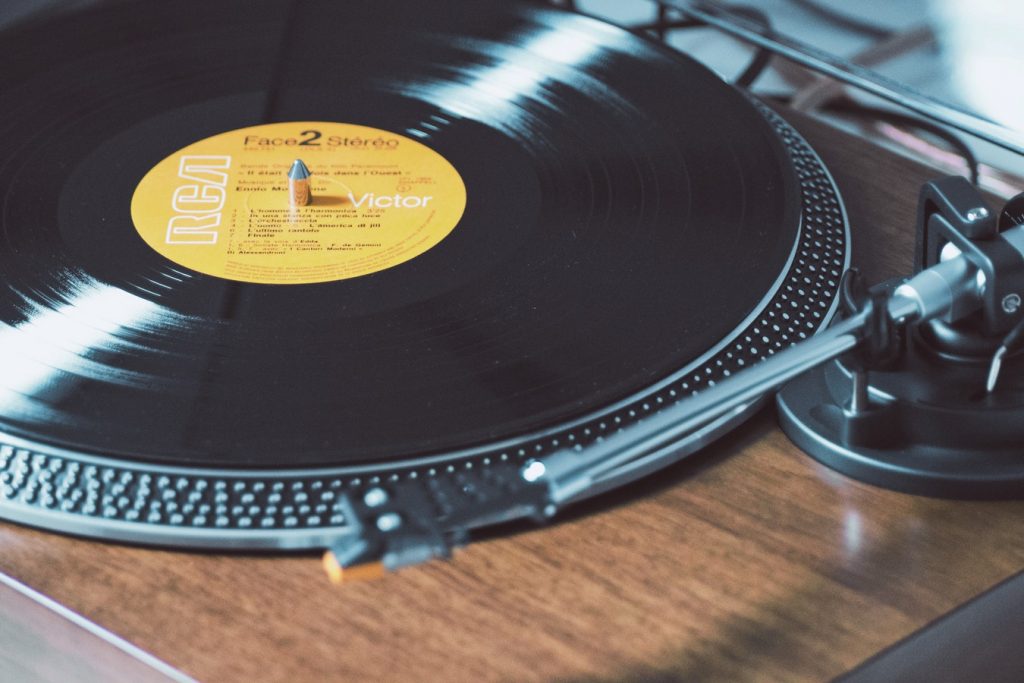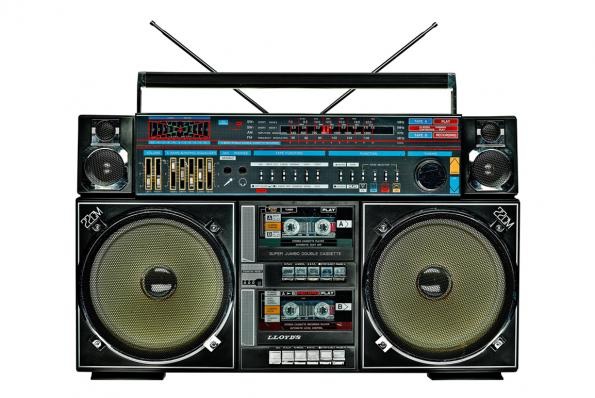Music Devices
How To Install And Setup Record Player

Unlike modern CD players, record player requires a lot of time and effort. However, if you are cared for it regularly and properly, you will not regret by the perfect sound quality and realistic feeling from classical music device. In this article, we will provide to you detailed instruction to install and maintain the best record players.
How To Operate Record Player:
First remove protecting cover of cartridge, put disc into the turntable, unlock the torn arm on the shelf, place the torn arm, start the record player and lower the needle. With the torn arm that are not from the same manufactures with record player, you need to manually lift the torn arm, lock the torn arm on the shelf and cover the stylus. If you forget this step, your stylus will be easily broken.
Adjusting To Limit Vibration:
The first thing you need to check is the turntable of record player. Although the vibration control system of the record player is good, a few vibrations will also come in and can damage the sound from low to medium-high frequencies. Using the pedestal to reduce vibration to the smallest level may reduce the negative impact on sound. This is even more important for a record player that does not have an anti-vibration system.
Touch your fingertip on the pedestal when the record player is playing, if you feel any vibration, it can seriously damage the sound. To see how great this effect is, use a doctor’s stethoscope against the base of the turntable. Or you can place a glass of water on the turntable and observe the water in the cup while playing the music device. It’s a simple and intuitive way to see how much mechanical and acoustic vibration can reach your system. Keep in mind that your hi-fi system is trying to recreate every tiny change to several millionths of an inch in the groove – about 1/1000 of a hair’s thickness. It is not a simple task in a vibrating environment.
There are several steps you can take to minimize the vibrations that occur during the operation of the record player system as well as the vibrations in the environment. First of all, the foot of the turntable must be placed on a stable surface – the inflated floor surface will not be able to create a solid foundation. If possible, fix the shelf on a brick wall or on a concrete floor. If your floor is made of wood, you may need to reinforce underneath wooden floor, such as adding a brace below the floor or cut a sawed sheet of 7-10cm thick to put under record player. If you cannot improve the floor, attach the shelf to a solid wall. You have to know that moving your record player to a more stable location can reduce vibration and, therefore, better sound quality.
Adjusting The Balance Of Record Player:
When a record player is not balanced, usually the operation of turntable, stylus, especially anti-skate, will be affected. Tilt problems cause the greatest impact on the pivoting torn arm, and the smallest on the linear tracking arm. Therefore make sure turntable and torn arm are in balance. Do not use the naked eye, instead you should use a bubble nivo slider to measure the balance. If the turntable is not balanced, adjust the anti-vibration system and adjust the height of each leg accordingly.
Setting Contact Of Stylus And Surface Of Disc:
- You should use a sensitized electronic scales (accurate to the tens of grams) to measure the pressure of stylus on surface of the disc. The standard pressure is mentioned on the instruction book, with allowed tolerance of 0.1-0.5 grams.
- Make sure the cartridge is properly balanced in the head sell with the sides of the cartridge are square to the head sell. When all adjustments are correct, carefully tighten the screw holding the cartridge.
- There are two ways to adjust the azimuth. The first way is to hear by your own ears. Rotate the cartridge in very small angles in different directions, and listen and feel which location is the best. The downside of this method is that if you do not have experience then you will probably get confused. The second method is to use an electronic voltmeter and a LP frequency transmitter to measure and test the output signal between the two channels.
Maintaining Base Of The Turntable:
The only thing that you can do is oiling the base. Follow the manufacturer’s advice on the type of oild as well as the oiling frequency. Lift the disc upwards, swept the old oil with a dry cloth, then pour in new oil but be careful not to overflow.
Base of the turntable are usually significantly improved with a larger viscosity. However, if the transmission system is not very good, this lubricant can reduce the speed of the system. All manufacturers sell their own lubricants, but testing different types of oil is also fun task.
Setting Belt:
Some rubber belts should be powder coated, some should be dipped, some should be softened on the surface, and others need to be cleaned. You should ask and follow the advice from manufactures to find the suitable setting and maintaining of belts. Some types of discs, due to their motors, require slippage when starting or slowing down, so their belts are usually coated with melting powder. The long-term slipping process will wipe out the powder and then start grinding the belts. In that case, replace the new belts from the same manufacturer.
The speed of the turntable is sometimes controlled by replacing pulleys on the top of the motor. So make sure the system is installed correctly.
Some Memorable Notes To Clean Record Player:
- Regularly check and clean surface of disc and stylus.
- Carefully store discs to avoid dust and humidity. You should store discs in album and better to buy disc cleaning machine to clean surface of the disc.
- Clean stylus by using a small brush which was dipped into special washing liquid. Remember to brush stylus along the spinning direction, no other way around.
Music
Understanding the Charm of “Twinkle Twinkle Little Star”

Twinkle Twinkle Little Star undoubtedly one of the most well-known lullabies in the world, “TwinkleTwinkle Littl Star” has been lulling generations of listeners and capturing their hearts.
History of the Lullaby
Undoubtedly one of the most well-known lullabies in the world, “Twinkle Twinkle Little Star” has been lulling generations of listeners and capturing their hearts. This beautiful tune has reached across time and cultural .aEarly 19th-century French song “Ah! vous dirai-je, maman” by Mozart is where “Twinkle got its start. It’s a song that’s been around since then. This well-known song’s evolution into the beloved lullaby we appreciate today illustrates a complex history that has changed according to different cultural influences and musical modifications.
Exploring the Melody: Musical Notations of “Twinkle Twinkle Littl Star”
Popular Variations and Interpretations of the Song
Many musicians and artists have contributed their artistic vision to “Twinkle Twinkle LittleStar” throughout the years. These modifications have enhanced the song’s adaptability and its capacity to connect with listeners of various musical tastes..
Influence on Pop Culture and Children’s Education
“Twinkle Twinkle Little Star” has become more than just a lullaby thanks to its appearances in a variety of children’s books, television shows. Its involvement in early childhood education exemplifies how important it is for promoting young brains’ cognitive and creative growth.
Analyzing the Timeless Appeal of “Twinkle Twinkle Little Star”
The song “Twinkle Twinkle” LittleStar” has a timeless allure because to its entrancing melody, restful rhythm, and cozy lyrics that arouse feelings of warmth and nostalgia. Its capacity to stir feelings and instill tranquillity has cemented its reputation among people all across the world.
Learning and Playing “Twinkle Twinkle Little Star” on Different Instruments
“Twinkle Twinkle Little Star” serves as an introductory piece for people learning to play a variety of musical instruments, including pianos, flutes, guitars, and ukuleles. Its simple structure and recognized tune make it an essential component of music instruction, igniting a love of music in students of all ages.
Importance of “Twinkle Twinkle Little Star” in Early Childhood Development
Early exposure to music, particularly through charming tunes like “Twinkle Twinkle Little Star,” is essential for enhancing cognitive development and promoting emotional well-being in young children. The lullaby’s calming tones and rhythmic pattern help young toddlers develop their memory, linguistic skills, and ability to communicate their emotions.
Appreciating the Global Reach and Adaptation of the Song
“Twinkle Twinkle LittleStar” has a worldwide appeal that has allowed it to cross national boundaries and linguistic barriers and win over the hearts of people from all walks of life. Its flexibility to be adapted to many linguistic and musical genres emphasizes its cross-cultural relevance .
Conclusion
With its enduring tune and sweet lyrics, ” has continued to amaze generations, serving happiness, and musical initiation for both kids and adults. Its capacity to cross boundaries significance as a treasured component of the world’s musical history.
Frequently Asked Questions About “TwinkleTwinkle’ Little Star”
-
Q1.Is “TwinkleTwinkleLittle Star” a traditional nursery rhyme?
” It is true that the nursery rhyme “TwinkleTwinkle Little Star” has a long history that dates back to the 18th century.
- Q2.Who composed the melody of “TwinkleTwinkle Star”?
- Wolfgang Amadeus Mozart, a well-known composer, is credited with creating the tune for “Twinkle Twinkle LittleStar.”
- Q3.What makes “TwinklTwinkle Little Star” an ideal choice for beginners in music?
- It is the perfect place to start for anyone learning to musical instruments because to its straightfor repeated pattern familiarity.
- Q4.How has “TwinkleTwinkle Little Star” influenced popular culture?
- A cultural staple, the lullaby has been used into a variety of media, including children’s novels, television shows,educational program.
- Q5.Why is exposure to music like “TwinkleTwinkle LittleStar” crucial in early childhood development?
- Young children’s , linguistic, and emotional development are aided by music, particularly well-known and calming tunes like Twinkl Twinkle Little Star.”
Music Devices
Old Music Devices

Nowadays, we have smartphones with music applications and software that allow us to listen to music anytime, anywhere. We also have several music devices specialized for music such MP3 player, Ipod…With those technologies, everything seems so easy and convenient. However, have you ever wonder how our seniors listen to their music before any things like phones and music players are born? You will be wow when you get to know those cool old music devices.
Victrola
Victrola is a phonograph which is invented in 1877 with ability of mechanical recording and reproduction of sound. The machine is produced by Victor Talking Machine Company with the ideal of phonograph that looks like a piece of furniture rather than a sound machine. After the Victrola was introduced in August, 1906, it was immediately become a hit which encouraged the company to release many sizes and designs of cabinets with the price range vary from small tabletop models with $15 up to $600 for Chippendale and Queen Anne-style cabinets of fine wood with gold trim.
The original Victrola design had many faults in which the most problematic is deep cabinet. The music devices required to reach down into the cabinets to change the record by lifting the needle. However, the problem was soon recognized and fixed by manufacturer. The new model used a domed which contained turntable and tone arm sitting nearly the top of the cabinet. New design model was only produced only few thousands which made them valuable to collector nowadays. In present, victrolas is famous decoration furniture which can bring luxury and ancient feel to the house.
Table Radio Player
Table radio player is a small, self-contained radio receiver that were widely used during 1900s. Back then, radio was the common music device in house and music was played from radio programs during the day. Most of table radio player is limited by functions even some had compact discs or audio cassette players and clock audio functions. Later model may have CD functionality which allows the devices to play CD in the table radio. The device can be run on battery power and portable for its small size.
Nowadays, due to the growth and innovation in technology, table radio player is not widely used as before and preferred as a furniture rather than music devices. There are not many CD or cassettes for people to play on table radio. The limited function is also one of reasons why people switch to modern radio with dials and multi-function built in. However, for some, dials are so much cooler than buttons and the device can bring back all the good memory in the past when everyone gathered around to listen to their favorite radio programs.
8 Track Tape Player
Before CD was invented and the technology innovation for Internet with mp3 file, tape was the most famous music container over the world. 8-track tape, also known as Stereo 8 or eight-track cartridge, is a magnetic tape sound-recording technology that was popular in mid-1960 to late 1970s. The device was created by a consortium led by Bill Lear in 1964. The invention was belonged to Lear Jet Corporation. The 8-track device was innovation from 4-track cartridge.
The device reached its peak of popularity during the booming automobile industry. The 8 track tape player was preferred by its convenience and portability. However, with cassette taking over the industry with many innovation in functions and designs, eight-track cartridge became less common in homes and vehicles in the late 1970s.
Boom Box
The boom box is still cool music device up to now. The bigger the boom box is, the cooler the owner seems. Carrying a giant good-looking boom box on the shoulder is one of sign of coolness in the 80s. The boom box is a common transistorized cassette tape recorder/player and AM/FM radio. With the birth of discs, some models have CD player instead of cassette player in the old model. The boom box is loved because it has an amplifier with one or two loud speakers and a carrying handle to carry the boom box around.
Designed for portability, boom boxes can be run on batteries as well as by line current. The size of boom box dependeds on how loud and heavy bass the device can provide. The biggest can reach the size of a suitcase. With its function, boom box has closely related with urban society and has become one of icons in American hip hop culture. Until now, you can see boom box in the hip hop or B-boy/break dance video.
With the booming of MP3 players and smartphone where people can listen to any songs they want on Internet, the popularity of boom box is rapidly declined. In order to adapt with the growth of technology, some models have included connections for MP3 and digital formats using USB connector or Bluetooth.
Walkman
It is a big mistake if Walkman is not on the list. This famous portable audio cassette/tape players in the late 1970s. The product is one of pioneers in changing music listening habit by allowing people to carry recorded music and listen to their favorite songs anytime anywhere they feel like through lightweight headphones. The music device is famous and loved over the world for the new experience.
In present, the music device is developed into many models in order to fit in the growth of digital platform. However, with many people, Walkman using cassette is represented for their youth.
Music Devices
Music Device History

In 21st century, listening to Music Device History is getting easier and easier with many modern and high-tech devices. The development of audio technology now allows us to listen to any songs we like with just a smart phone. Saying goodbye to the time that we have to write down the lyrics and look for the songs among radio and compact discs. Now, with just many applications and software, just by one click and we will know the name of the song is playing. With such an amazing help from technology, have you ever wonder how long it takes for us to get here? When was the first music device invented? This article will answer those questions by get you through the timeline of music device development.
Where All the Stories Began
The very first music device was Music Device History was made in Jan, 1811. It is an automatic musical instrument that produces sound by placing pins on a revolving cylinder or disc. The original music box was tiny container that can fit into a waistcoat pocket. In 1815, the very first factory that produced music boxes was opened. The industry quickly expanded to many countries including Germany and US. From a tiny music box, this music device then was developed into giant designs and many other variations. And at the end of 19th century, music box was rapidly replaced by player piano. Nowadays, there are still music box manufactures around the world but mostly for decoration purpose.
1850s to 1900s
After the birth of music box, in 1857, phonautograph was invented by Edouard-Leon Scott de Martinville. The device is known as the earliest device that could record sound. Phonautograph transcribed sound waves as undulations using a traced line on smoke-blacken paper or glass. Not long after the invention of phonautograph, 1870s, phonautogram was defined as device can provide records that contain enough information about the sound in theory. However, with the insubstantial two-dimensional line, physical playback could not work until computer technology recreated the records in 2008.
In 1876, the piano player was invented and one year later, in 1877, the first phonograph was created by Thomas Edison. The invention soon made massive change in the music and audio industry. The device was mechanical recording and reproduction of sound using the vibration waveforms. The machine then was improved by Alexander Graham Bell who is the first patterned for a practical telephone that change the way human communication.
After the significant change from phonograph, in 1889, the first jukebox was introduced. The invention was an innovation from phonograph which involved rubber tubes and was activated by coin in each tubes. Back then, the device was incorporated with other devices until inventors implemented on this automated music-playing device.
During 1900s
20th century has witnessed huge changes in the Music Device History and sound industry as many significant inventions were born and set the foundation for many innovations later. The first invention in 20th century was radio station in Nov, 1920. KDKA was the very first commercially licensed radio station over the world. The station can operated on clear channel and broadcast. As the radio station was available, the radio industry was booming for radio products such as rec.
Not until 1964 had eight-track player and tape been invented. It was a magnetic tape sound-recording technology. The invention was innovation from four-track cartridge. The stereo 8 was then introduced under Lear Jet Corporation and was a massive hit in the sound and audio industry. After that, with the corporation with automobile industry, 8-track players started to be installed in cars which then were available in many cars and trucks through the early 1980s.
However, the era of 8-track did not last for long with the introduction of cassette in 1971. The invention then changed the entire music industry by allowing record dictation for high-quality music playback. Many music production then switched to cassette and the production line started to expand with many products and innovations.
Five year later, the first boom box was patterned. It was a portable transistorized cassette tape recorder or player with AM/FM radio. The design composed of two or more loudspeakers, an amplifier, radio tuner and cassette player. The louder and heavier bass will require bigger design. This music device soon became an icon in urban society and closely linked to American hip-hop culture.
The music industry then experienced another change with the invention of Walkman which is a portable cassette player through headphones. The device soon became a favorite music player by teenagers and music fans.
Another big change in 20th century was the introduction of compact disc or CD in May, 1982. The invention was the result of digital technology which allowed higher music quality than cassette. The circle thin shape can contain more songs than cassette and not very soon until the CD era had took over the world. Not for music, along with computer and electronic innovations, VCD was born. The invention then changed the direction of music industry as many music player manufacturers started to release CD-player products including boombox and Walkman.
In the late 20th century, finally the MP3 was invented. With the help of computer science and Internet, we finally can download music from online website, setting another platform for music industry besides physical sales. Music devices then had another ultimate shift from CD to digital music and the era of digital was just beginning.
In the Beginning of 21st Century up to Now
21st century started with the first portable media player in 2002. Many innovations came after and Ipod generation began to boom. The product is a pioneer in using touch sensitive controls to scroll down the playlists. The Music Device History industry was remarkably changed with smaller MP3 player, media playback and yes, touch screen. The music devices and players are getting smaller with many applications and functions built in. Smartphone comes along and changes the game of music industry for its music functions. In 2010, we finally had to say goodbye to Walkman – an icon of music player in 80s after the dominance of CDs and MP3. With the fast changing environment, we will continue to witness more amazing creations and innovation in music device industry in near future.
-

 TECHNOLOGY4 weeks ago
TECHNOLOGY4 weeks agoSnmpanel: Boosting Your Social Media Presence
-

 FASHION4 weeks ago
FASHION4 weeks agoArt and Fashion Colleges in Uganda: Cultivating Creativity and Style
-

 BUSINESS4 weeks ago
BUSINESS4 weeks agoJack Doherty Net Worth: A Detailed Look at the Wealth of the Entrepreneur
-

 GAMING4 weeks ago
GAMING4 weeks agoIlikecomox: Exploring the Charm of a Picturesque Destination
-

 TECHNOLOGY3 weeks ago
TECHNOLOGY3 weeks agoCheap VPS: Affordable Solutions for Your Hosting Needs
-

 TECHNOLOGY4 weeks ago
TECHNOLOGY4 weeks agoCheap VPS Hosting: A Comprehensive Guide to Affordable Virtual Private Servers
-

 ENTERTAINMENT4 weeks ago
ENTERTAINMENT4 weeks agoThe Fascinating World of Pollaste: Understanding this 700-year-old Traditio
-

 Uncategorized6 days ago
Uncategorized6 days agoAmazon’s AMSGKP Pre-Sale Unveiled for 2024 – AMSGKP Token Goes Live
